
Good skin, from an evolutionary standpoint, implies several things to your potential mate. It implies you have good genetics, have never been sick, and/or are responsible. If you’re a woman, it’s a must. If you’re a dude and this is the first time you’re thinking about skincare, good on you. It’s one of the easiest ways to maximize your looks. You can ensure that your value in the dating market stays high throughout your lifetime.
Skincare is by far one of the easiest ways to maximize and preserve your looks. But there is so much marketing and hype out there surrounding skincare products, especially on the internet. This is why I have a whole section of this article dedicated to things you don’t need. However, there are only three things that you really need: Sun Protection, Stimulation, and Cleansing. And yes, this means you can ditch the fancy moisturizers.
If you’re a woman, aging gracefully is key. If you’re a guy, then the fact is, people will still date you in your 30s, 40s, and beyond if you look good. It’s especially true if you’re older and still look good because they’ll want your youthful immortality genetics. As a rule, if you want to stay youthful for as long as you can (trust me, you do), avoid these primary causes of skin aging: smoking, pollution, solar radiation, stress, poor nutrition & lack of exercise.
Basic Skincare Routine
- Use a facial cleanser.
- Apply sunscreen to your face to help protect it all day.
- Exfoliate 2-3 times a week.
- Apply Retinol.
This skincare routine is easy and will get you 90% of the results of the advanced skincare routine. These few simple steps go a long way.
Advanced Skincare Routine
A skincare routine is best when it’s suited to your specific skin. This is a task that a cosmetologist or dermatologist can help you with. The following is an example of a robust skincare routine that will keep your skin healthy for a long time.
Don’t take this dogmatically and feel free to change whatever suits you best. It may look long, but trust me, it’s not that bad to actually implement and get used to:
Morning:
- Drink a glass of water. Also, add juicing to your meals in the day if you aren’t busy.
- Use a facial cleanser.
- Apply cold water to your face so that the pores shut, preventing bacteria from getting in.
- Pat down your face with a clean towel. If you rub the towel on your face you can cause micro-dermabrasions and allow bacteria to fester.
- Apply your facial serum or anti-aging cream with niacinamide & peptides.
- Apply some good eye cream. Since the area on your eye is thin, eye cream is formulated to thicken the skin and help drain fluids out of your eye area, helping you avoid dark bags and eye circles.
- Add petroleum jelly to your lips or hair loss serum to your scalp if you are working on either of those areas. Apply anything else to your face that’s part of your aesthetics routine.
- Apply sunscreen to your face to help protect your face all day long.
Nighttime:
Apply the following:
- Exfoliator.
- Cleanser.
- Retinol.
- Facial serum or anti-aging cream with niacinamide & peptides.
- Eye serum and/or hair growth serum.
Three Times a Year:
- Pay for a professional microneedling session.
- Use a vitamin C serum with peptides after microneedling.
- Get a sports facial.
Sun Protection
This is number one. Sunlight is just a bunch of photons coming from space that damage your DNA and your skin. Your body is good at repairing sun damage. But the more you expose yourself to, the more you’ve set yourself back in terms of aging. Sun damage causes premature aging, skin cancer, cataracts, sunburns, and increases your chances of growing new moles. Most visible signs of aging are from sunlight.
UVA rays are the most powerful and dangerous. They penetrate into the dermis, your skin’s deepest layer, causing DNA damage. UVB rays will give you a sunburn if you’re in the sun too long. I love to show people this picture of William McElligott. He exposed the left side of his face to sunlight for 28 years as a truck driver:
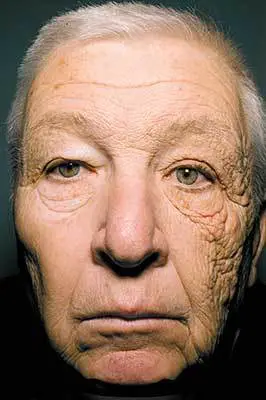
He has a condition called Favre–Racouchot syndrome, which makes him more sensitive to light. So it’s not a totally accurate representation of what you can expect sun damage to do, but it’s close. While glass will block UVB rays, it won’t block UVA. That’s why most people have more freckles and sun damage on the left side of their face as well. Studies show this is the opposite in countries where people drive on the opposite side of the car, like Australia.
Look at these twins:
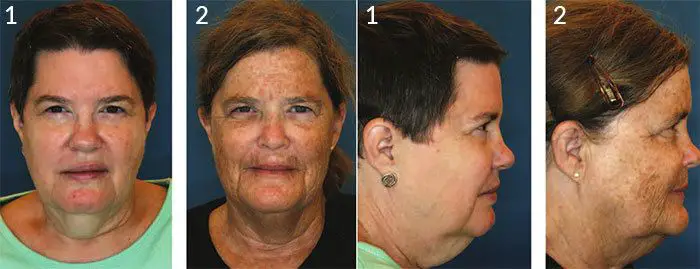
Both twins are the same age obviously, but twin 2 loves tanning and twin 1 wears sunscreen. You can clearly see the extra sunspots and wrinkles on twin 2. Compare celebrities of similar ages. Look at runners. You’ll constantly see people that look way older than they need to because of their love of tanning.
Sun is good for you and helps your body synthesize Vitamin D. But it doesn’t have to do that on your face. So wear sunscreen as much as you can. Get into the habit of putting one on every day. Get an SPF 30 sunscreen, which will block 97% of UVB rays. SPF 8 blocks 87% of sunlight, SPF 50 blocks 98% of sunlight, and SPF 100 will block 99% of sunlight. You get diminishing returns and it’s not worth going past SPF 30 to pay more for that extra 1-2%.
Sun avoidance is good too, but it has its caveats. Even on a cloudy day, some UVA rays are still getting through. You’re not completely protected. Also, if you’re sitting in the shade, sun rays are still bouncing off of the ground and hitting you. They’re also getting through whatever shade you’re under. Sunscreen every day on your face also doesn’t protect you completely, but it’s still the superior option. You have to protect your mug.
Remember, there’s no such thing as a healthy tan. Tanned skin = sun damage and damaged DNA. Period. The healthiest skin you can have is your own natural color. And even if you’re white and pasty like me, you can still look amazing by taking care of your skin. You want it to be glowing and your cheeks to be red. Read on to find out how.

So, if you do anything, purchase a sunscreen. You can get a chemical sunscreen, or a physical barrier sunscreen. The chemical sunscreen is easier to apply, but it absorbs into your skin and doesn’t last as long. People think the chemicals in the chemical sunscreen are a bigger source of cancer than the sun itself but that’s simply not true. The sunscreen absorbs into dead skin cells; it doesn’t affect you at all. And even if it gets into your bloodstream, your kidneys will make short work of it.
The physical sunscreen works by creating an actual physical barrier that repels sun rays. It lasts longer, but makes you look white and is very smudgy/oily.
Stimulation
If you want your skin to look amazing, you have to constantly be growing new skin cells, and shedding off the top layer so that those new fresh skin cells are at the forefront. As you age, skin turnover rate decreases, so you want to combat this as much as you can. You also want those new skin cells to be as healthy as possible. What stimulates the skin? A lot, as it turns out.
Retinol
Retinol is priority number one as a skincare ingredient. It’s one of the most scientifically proven ingredients that makes your skin better and combats aging. Retinol has been called dermatologists’ gold standard for anti-aging. It improves skin texture, reduces pore size, reduces hyperpigmentation, increases collagen production, produces new blood vessels in the skin, and speeds up cell turnover.
However, it’s irritating to many people. You have to buy it with a product that will make it easier to absorb and tolerate, such as ferulic acid. Or, you will have to slowly build up to it. You must take it for a long time before you notice results. The idea that retinol makes your sunburn worse is a myth. It only seems worse because the retinol itself is already irritating for your skin if you use too much too fast.
Get a prescription for Tretinoin cream (0.025%). Or, start off with a weaker over the counter retinoid cream. Start applying it 3 days a week, then every other day, then every day. After that, you can build up to higher and higher concentrations until you get to 0.1% tretinoin cream. Your face will burn and be dry if you put on too much too fast. Expect it to happen.
Exfoliator
Buy an exfoliating scrub to peel off those dead skin cells. This helps increase skin cell turnover rate. Exfoliating will help you with any skin problems you might have, like acne. An exfoliator also brings more blood flow to the surface of the skin, which helps give you that glowing look you’re aiming for. It will reduce congestion of blackhead pores, break up pigmented skin cells, and reduce ingrown hairs.
This is one of the most important parts of your skincare routine, but remember, you don’t have to do this every day. You don’t want to strip essential oils from your skin, so aim to exfoliate maybe 2-3 days a week.
Diet & Lifestyle
You want to be drinking plenty of water. Your body needs to hydrate your skin from the inside out, which is the primary means to moisturize your skin. Make sure you’re getting adequate nutrition and enough protein to fuel the production of collagen and new skin cells. One of the most powerful ways I can think of to make my skin look nice is juicing with carrots, celery, beets, banana, and kale. Even if you have pasty white skin, it will look amazing, albeit temporarily.
Be sure to practice some sort of fasting or calorie restriction, and be sure to get plenty of physical activity. This will make you and your skin healthier from the inside out.
Sports Facial
You can get this at most salons, or if not, just get a regular facial. This is a multi-step treatment that begins with a consultation, cleansing, skin analysis, steam to soften up blackheads, exfoliation, chemical peels, extraction of blackheads/whiteheads, facial mask, facial massage, and final application of products. Your skin will look good and be in good health. In a perfect world you would get this once a month. I recommend getting at least one of these so that they can tell you what type of skin you have.
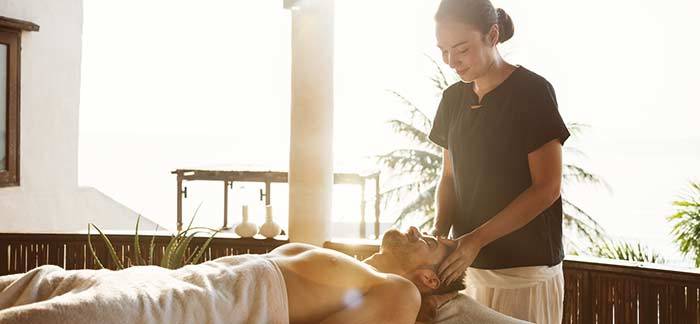
Microneedling
Microneedling, or collagen induction therapy, creates little holes in your skin with tiny needles. This creates a little micro-injury which forces the body to increase blood flow to the site to heal it. As a side-effect of this procedure, your skin begins to produce more collagen, which decreases with age.
In addition, it massively improves product absorption since you have a direct channel into your skin created by the needle. This is important because men’s skin is thicker and tougher than women’s. If you’re a guy, products that are for women won’t be as effective unless you microneedle beforehand. But watch out, your skin is sensitive and inflamed after microneedling. Don’t put anything irritating or acidic on your skin after microneedling.
However, if you’re regularly going to microneedle your face, I recommend just having it done professionally and no more than 2-3 times per year.
Cleansing
Cleansing the skin just makes sure that it’s clean, and it removes all impurities. You don’t want anything like that lingering on your skin since it can cause problems such as acne, or other skin conditions. Pollution is one of the greatest causes of aging, right there after sunlight. So cleansing the skin of pollution particles is key. Buy a high-quality cleanser and apply it at least once a day. Simple.
Red Light Therapy
Red light therapy uses light at a wavelength of 620 to 700 nm. It is thought to work by stimulating the mitochondria in the skin cells. It directly stimulates fibroblasts, which create collagen and elastin. A study by Avci et al. highlights the host of benefits it provides such as helping to heal scars by stimulating stem cells, improving wrinkles, fading acne scars, managing psoriasis, fading hypertrophic scars, and helping with burns. It can help heal some UV damage and prevent you from incurring more in the future.
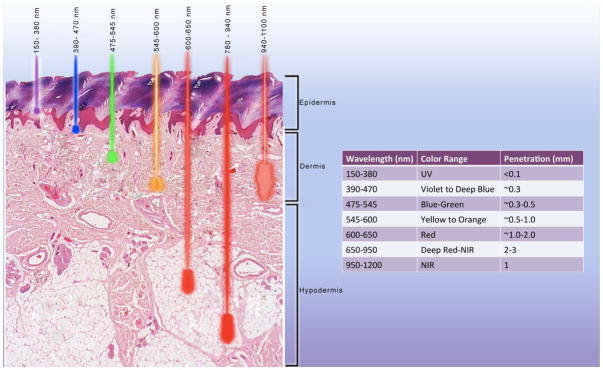
Add red light therapy to your regimen. There’s no downside.
Anti-Aging Skincare Ingredients
While most of the anti-aging and fancy moisturizing serums you’ll find out there are mostly hype, there are several ingredients that are well researched and will actually make a difference should you apply them every day.
Niacinamide
Niacinamide is a form of B3 that penetrates deep into the skin. It helps with DNA repair throughout the body. For the skin, it can help with fine lines and wrinkles, hyperpigmented spots, red blotchiness, skin yellowing, and skin sallowness. It also increases elasticity. Add it to your routine.
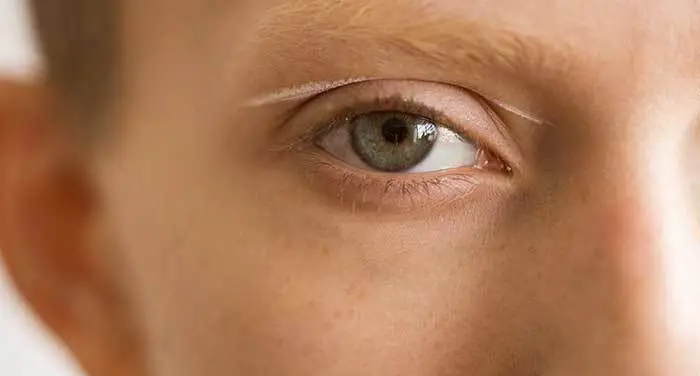
Vitamin C
Vitamin C actually stimulates fibroblasts to produce more collagen and elastin. It helps manage oxidative stress, reduces inflammation, promotes wound healing, and is actually a skin brightener. Make sure you get plenty of vitamin C in your diet or supplement with it if you don’t want to apply it topically. It’s difficult to deliver into the dermis and oxidizes quickly.
Not exactly a must-have, but if you combine it with microneedling, you’ll see some results especially if you have sun-damaged skin. Don’t take it with retinol though, as that will just irritate your skin. If you decide to get it, regular ascorbic acid is the best. Don’t purchase any other vitamin C derivatives.
Peptides
A study by Schagen et al took a look at the peptides used in skincare for the last two decades. The conclusion was that peptides are effective and warrant more research.
Peptides are small parts of proteins that are broken down by enzymes on your skin and absorbed. They trigger skin cells to produce more collagen. It takes a long time to notice the effect of peptides. But they do several good things for your skin. Copper polypeptides help reduce inflammation. Peptides such as Matrixyl help produce collagen. Neuropeptides claim to help reduce muscle contraction, similar to how Botox works.
My thoughts are that since the research on peptides isn’t as robust as something like retinol, don’t go out of your way to buy peptides. But if you see them in a skincare product, it can’t hurt! However, it won’t make or break your skincare routine. You might not even notice the effects.
What Skincare Products Don’t You Need?
Moisturizer
This is probably an extremely unconventional stance, but you don’t need a moisturizer and you don’t need anything that “moisturizes”. Your skin moisturizes itself. Moisturizers are all hype. Cosmetic companies in the 50s and 60s pushed them on us and unfortunately, the brainwashing has endured until today.
There’s a grand total of zero scientific studies that show that moisturizer is “anti-aging”. You’ll notice that even if your skin glows after applying a moisturizer for the first time, you’ll just go back to normal after a while. It can’t penetrate to your deepest skin layer. Leaving your skin glowing temporarily won’t prevent you from getting any older. This raises the question, why even use it then?
The fact is, your skin moisturizes itself from the inside out just fine. Dr. Zein Obagi, a Beverly Hills dermatologist and creator of his own skincare product line, believes that moisturizing takes away your skin’s ability to moisturize itself. This is why when you get into a moisturizing routine, you’ll have a withdrawal that lasts at least 2 weeks (the time it takes for skin to renew itself).
Refinery 29 got the chance to talk with Dr. Obagi who said “When you use moisturizer every day, you run the risk of making your skin older, not younger. If you apply a lot of moisture, the skin will become sensitive, dry, dull, and interfere with natural hydration. The tree gets its nutrients from the ground; no matter how much you spray the tree, it will become dry,”
Hyaluronic Acid
Hyaluronic acid is a humectant, which means it will pull moisture into your skin. It’s a juicy substance that is found in your joints and acts as a plumping agent in your skin. Like most things, it decreases with age. But you have to replace it manually, as it can’t be stimulated to grow like collagen can. It can hold 1000x its weight in water, has been a skincare ingredient since the 70s, and is the stuff that dermal fillers like Voluma and Restylane are made of.
When injected, it increases elasticity, speeds up wound healing & growth of new skin, improves the appearance of wrinkles, reduces inflammation, reduces redness, reduces itching, and scavenges free radicals. Unfortunately, it doesn’t penetrate very deeply by itself. For men, it’s even less useful because of our thicker skin. At best you can get it in a serum that provides better penetration, or at least use it after microneedling.
Like all other moisturizing agents though, hyaluronic acid is unnecessary. Unless it’s injected directly into your dermis, all it’s doing is making your skin look nicer temporarily. It’s not an anti-aging ingredient, and it doesn’t increase the production of collagen, so don’t spend money on it. Also, since hyaluronic acid is such a water hog and will literally suck moisture out of the air, you have to add water with it. Otherwise, it will actually dry your skin by pulling water out of other skin layers.
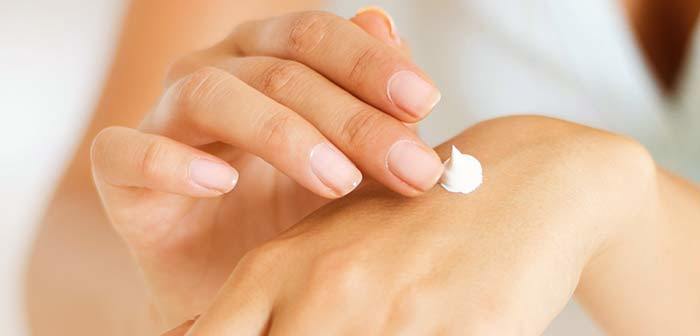
Antioxidants
There’s no actual solid proof that antioxidants combat aging or help reduce wrinkles. While I wouldn’t go out of your way to avoid antioxidants, it doesn’t appear that adding them to your skincare routine is all that helpful, unless maybe you’re over 40. A study by Campisi et al. concluded that younger people need a certain amount of oxidative stress, as it forces your skin to learn how to regenerate and protect itself on its own.
I might maybe consider vitamin C with microneedling because it’s more than just an antioxidant. But don’t mess around with green tea or random anti-oxidant extracts. It’s not exactly that they don’t do anything, it’s that it’s not worth your time and effort unless you’re getting close to middle age.
Toner
Most people don’t need toners. There are several different types.
- There are cleansing toners that remove excess oils and dead skin cells after cleansing. The problem is that if you still have oils and dead skin cells after cleansing, your cleanser isn’t doing its job.
- There are pH balancing toners that keep your pH optimal or prime your skin for acids such as glycolic peels, etc. You don’t want to add this to your daily routine since you’re taking away the skin’s ability to regulate its own pH. If you get a glycolic peel at a salon or something and they want to use this toner, fine. But otherwise, it’s an extra unnecessary step to add to your routine.
- There are hydrating toners that moisturize your skin. This goes back to the section on moisturizers: you don’t need them because you’re robbing your skin of the ability to moisturize itself.
- There are toners that do all 3 or some combination, but they’re still not anymore necessary added together than they are by themselves.
If you have extremely oily skin, see your dermatologist about getting a pH balancing toner, or try one out and see if it helps you. Otherwise, don’t waste your time or money on toners.
Self Tanner
This is a purely subjective stance here. If you think you look great with a self-tanner, go ahead and add it to your routine. Personally, I hate having my face and neck be Donald Trump orange, with the rest of my body my normal skin color. If you get this done at a tanning salon, it will be more even. However, you’re looking at potential streaks and drying issues with the self-tanner.
It’s an unnatural look and you’re better off exfoliating and getting your diet on point by drinking lots of water and juicing. A pale healthy complexion will always look better than an unnatural & unhealthy tan.
That being said, if you seriously want a tan and are contemplating going in the sun, get self-tanner instead and save yourself the skin damage.

Acne Fighter
Acne fighters fight acne by killing the bacteria that cause acne, removing excess oil, removing excess skin cells and reducing inflammation. The problem is, your normal skincare routine with a cleanser and exfoliator should take care of all these issues anyway. I get acne too, but it’s at a bare minimum on my face when I stay on top of my cleansing game.
If you have serious acne problems, get them handled ASAP before they do more damage to your face. See your dermatologist about getting on Accutane, and consider procedures like microneedling, microdermabrasion, and laser resurfacing to get rid of your acne scars.
Remember, this is the easiest thing you can do to maximize your looks. Get on it!

